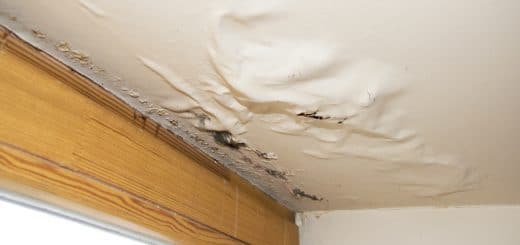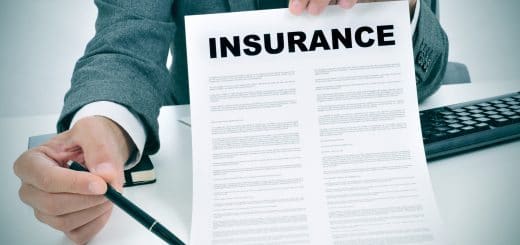How to Create a Preparedness Kit for Your Business
When a disaster strikes, a quick and adequate response is your only chance to stay safe and recover in short order. To be able to react fast and effectively, however, you need to be well prepared – both at home and at work.
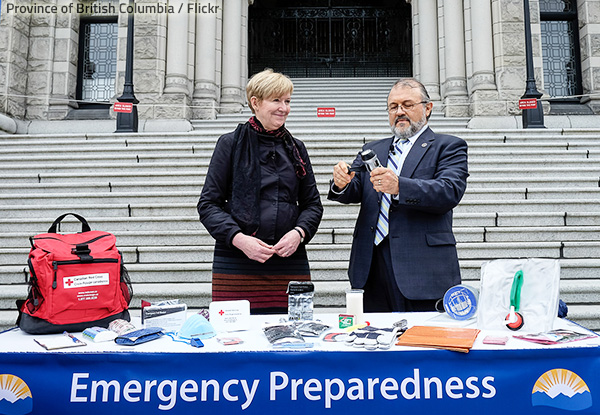
Proper preparationPreparation is the steps taken to ready a property, equipmen... More will help you protect lives and property in the event of a disaster.
If you’re a business owner, proper disaster preparednessPreparedness is the state of being ready to respond to emerg... More takes on even more importance – you need to ensure not only your own safety and the safety of your employees, customers, and everyone else who happens to be in your company building when an emergency occurs, but also the continuity of your business and its future. A good business disaster plan will help you protect lives, equipment, and property, minimize financial loss, and expedite recovery.
Yet, even a well-thought business emergency preparednessPreparedness is the state of being ready to respond to emerg... More plan won’t ensure your survival without proper supplies – you and your employees may be stranded at work for days until roads are cleared; electricity may be out for a long time causing water treatment plants to shut down; there may be bodily injuries requiring medical attention; etc. Therefore, business owners all over the country are urged to assemble office survival kits that contain all the emergency supplies needed to ensure the safety and well-being of everyone in the company in the event of a disaster.
Here are some guidelines for creating and maintaining a business preparednessPreparedness is the state of being ready to respond to emerg... More kit that can help protect you and your staff in an emergency situation and allow you to resume normal operations as soon as possible after the disaster:
Prepare an Emergency Kit for Your Business
A business disaster kit should include emergency office supplies and equipment that will allow you and your employees to stay safe and well while waiting out the storm, give first aid to the injured, and receive timely updates and information about the situation at hand.
So, what to put in an office emergency kit? Here is a list of items to consider when creating a business preparednessPreparedness is the state of being ready to respond to emerg... More kit:
- Bottled water – A minimum three-day supply of water for every member of your staff (one gallon of water per person per day). Running water will likely be unavailable or unsafe during and immediately after a disaster, so you need to have enough clean water for both drinking and sanitary purposes. It is a good idea to store some water purification tablets as well;
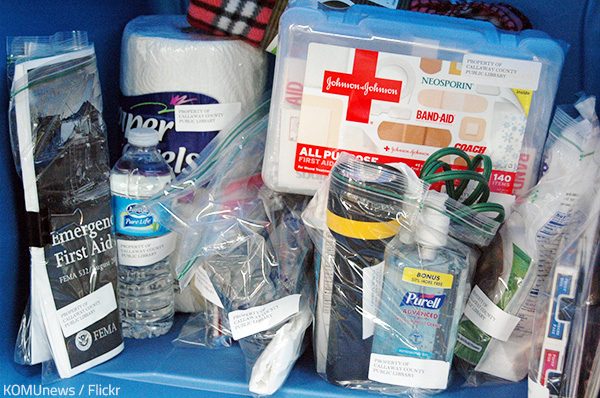
An office emergency kit should contain items and equipment that will ensure your and your employees’ safety and well-being while waiting out the storm at your workplace.
- Non-perishable food – A three-day supply of non-perishable food per person – the food should not require any cooking and should not provoke thirst (canned meats, vegetables, and fruits; nuts, cereal bars and other healthy snacks that have a long shelf life; jars of peanut butter, jam, jelly, and other high energy foods; dried fruits; etc.). Make sure you store a manual can opener and disposable utensils with the food supplies;
- First-aid kit and essential medications – Sterile gauze pads, bandages, antiseptic lotion, pain relievers, fever reducers, burn ointment, allergy meds, thermometer, scissors, tweezers, sterile gloves and any other supplies that may be needed to provide first aid and relief until proper medical assistance is available. Ask every employee to keep in the office a few days’ worth of prescription medications and specialized medical items they use on a daily basis;
- Sanitation and hygiene supplies – Hand soap, paper towels, moist towelettes, antibacterial wipes, toilet paper, garbage bags, disinfectants, and other hygiene supplies necessary to maintain sanitary conditions and avoid sickness during a time of disaster;
- Personal protection gear – Dust masks, safety glasses, work gloves, hard hats, sturdy boots, and other personal protection equipment. Thermal blankets, rain ponchos, jackets, tarps, and sleeping bags are also worth considering;
- Emergency supplies – Fire extinguishers, flashlights, light-sticks, spare batteries, whistles to signal for help, a portable hand crank radio, a disposable camera, and other items that will help in search and rescue efforts, keep you updated with the latest information, and allow you to document the damage (useful for insurance claims);
- Basic tools – Swiss army knives, wrenches, pliers, hammers, screwdrivers, duct tape, plastic sheeting, plastic ties, and other tools and supplies that may be needed for emergency tasks like turning off the water valve or waterproofingWaterproofing is the application of materials or coatings de... More a room;
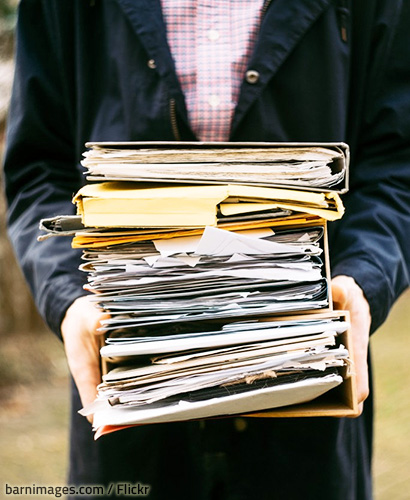
Keep copies of all key company documents with your emergency supplies.
- Company documents – Copies of important documents and records (bank statements, tax returns, insurance policies, client files, employee ID information, etc.) that will help you recover quickly after the disaster. Needless to say, all essential company data and business records should be stored in the cloud and/or on digital media in an offsite facility;
- Emergency contacts list – A list of emergency phone numbers and contacts that are crucial to business operations (such as local police, fire, and ambulance services, banks, lawyers, accountants, suppliers, etc.). It is also highly recommended to keep a spare cell-phone with a solar charger in your workplace emergency kit;
- Other emergency office supplies – Smoke alarms, plastic containers, maps of the local area, spare keys, cash, and any other items that may come handy in an emergency.
Check and Update Your Business Emergency Preparedness Kit Regularly
When preparing an emergency kit for your business, keep in mind that it needs to be regularly updated in order to be useful when a disaster strikes. Ideally, your preparednessPreparedness is the state of being ready to respond to emerg... More kit should be checked every six months to ensure the emergency equipment is properly functioning and the emergency supplies have not reached their expiration dates:
- Rotate food items and water supply twice a year, so that they stay fresh and healthy;
- Go through your first aid kit and replace medications approaching their expiration dates;
- Check if all required tools and protective supplies are in place and properly organized. Check batteries and replace them as necessary;

Stock on healthy foods and rotate them every six months.
- Update sanitation materials every year;
- Turn on emergency equipment like radios and light-sticks to make sure they are in good working order;
- Make sure you have copies of all the company’s essential documentation stored in your business survival kit;
- Add more supplies as necessary to accommodate each member of your team.
Be sure to keep individual items in air-tight plastic bags and store your emergency supplies in sturdy, easy-to-carry containers that are both fire- and waterproof.
Good to remember: Keep your emergency preparednessPreparedness is the state of being ready to respond to emerg... More kit in the safest place inside your company building where people will gather in the event of a disaster. Make sure you can quickly and easily retrieve it during an emergency evacuation.
Train Employees on Disaster Preparedness
Creating an emergency preparednessPreparedness is the state of being ready to respond to emerg... More kit for your business will be of little use if your employees are not familiar with the company’s disaster response plan and can’t react in a timely and effective manner in the event of an emergency. You need to train your staff so that everyone knows what to do if a disaster strikes during business hours:
- Review your emergency preparednessPreparedness is the state of being ready to respond to emerg... More plan with your employees every six months to remind them of the company safety procedures, emergency warning and communication systems, and evacuation plan. Make sure everyone knows where the safest places in the building and the emergency supplies are;
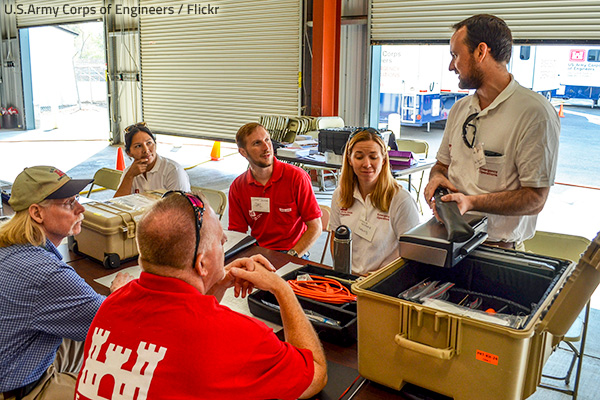
Make sure all your employees know what’s in your emergency preparednessPreparedness is the state of being ready to respond to emerg... More kit, how to use every individual item, where the kit is kept, and how to access it.
- Encourage employees to keep their own emergency supplies (copies of personal documents, a few days’ worth of prescription medications, a desk flashlight, basic personal care items, etc.) at hand;
- Inform employees of their individual roles and responsibilities during an emergency. Let them know that you expect the personnel to help ensure the safety of all customers, business partners, and other people who are at the company property when a disaster strikes;
- Have regular drills to practice your business disaster plan.
One final piece of advice: Your preparednessPreparedness is the state of being ready to respond to emerg... More plan will help you weather the storm, but you need to know what to do immediately after a disaster in order to expedite recovery and get your business back on track as soon as possible:
- Contact your business’s insurance provider immediately after the storm passes;
- Document the sustained damage and take measures to salvage as much of your property as you can;
- Call experienced storm damage repair specialists to restore your company building and return it to normal functioning. Using professional tornado and hurricane damage repair services will allow you to successfully reopen with a few short weeks after the disaster.










